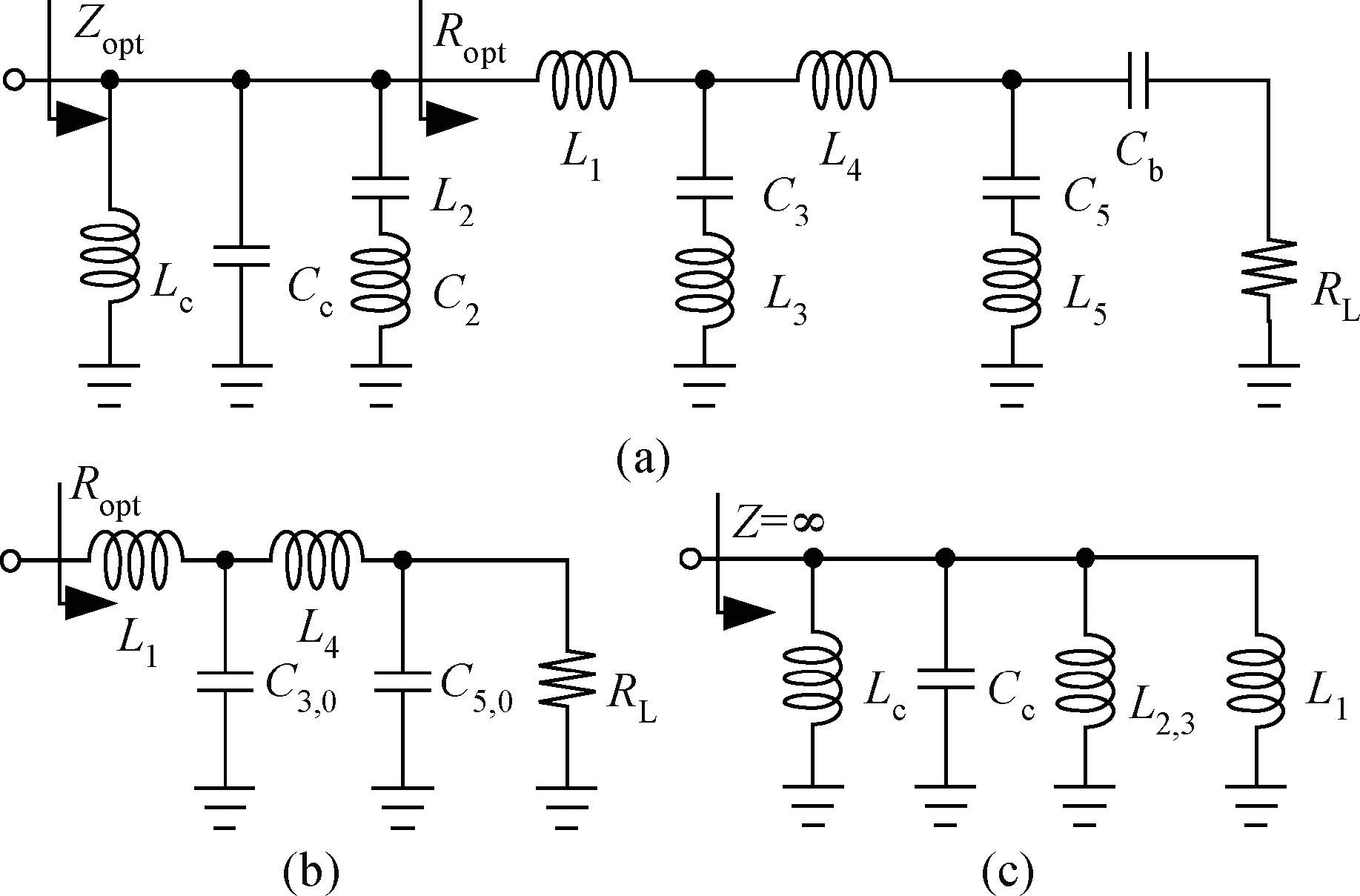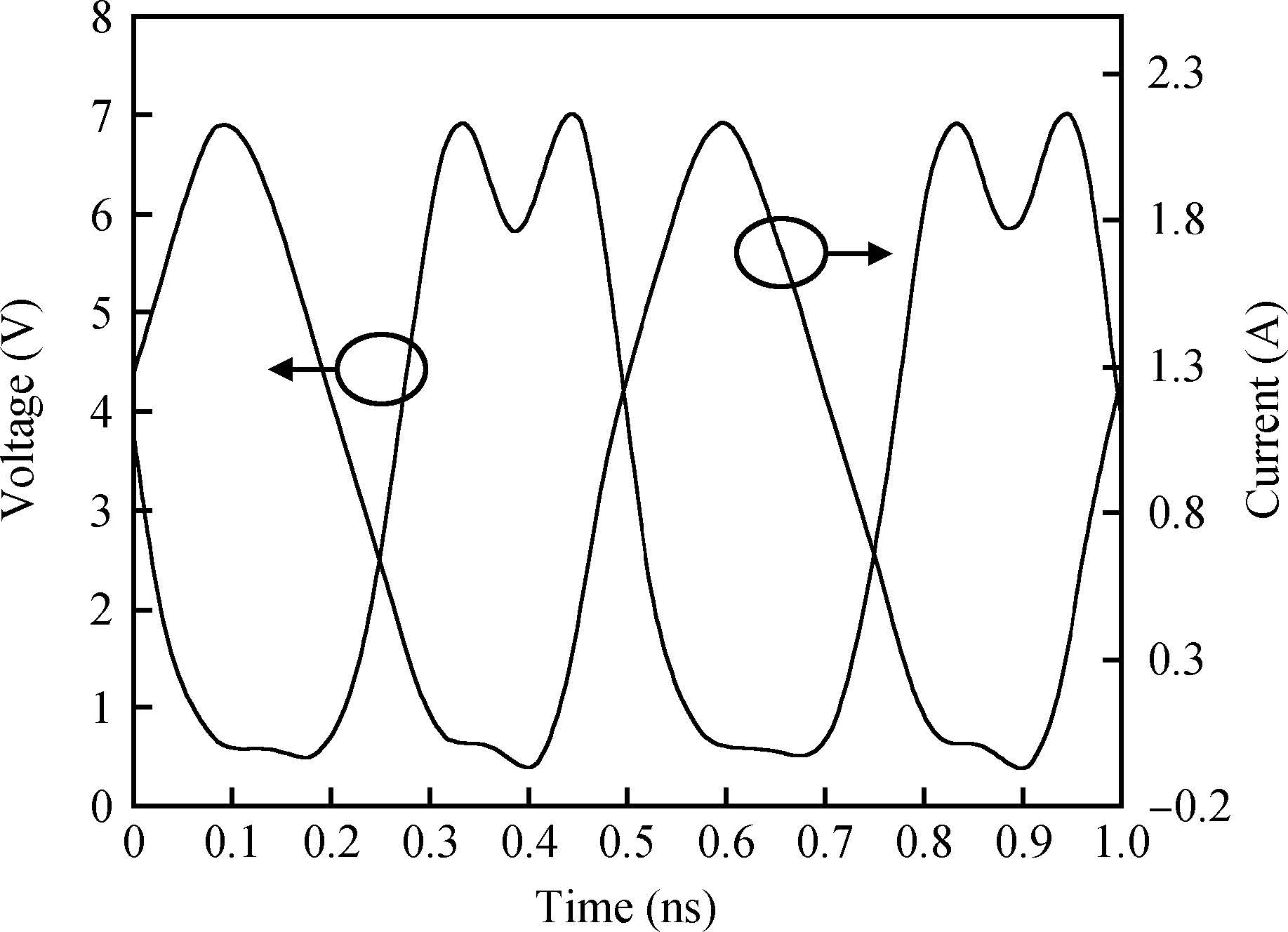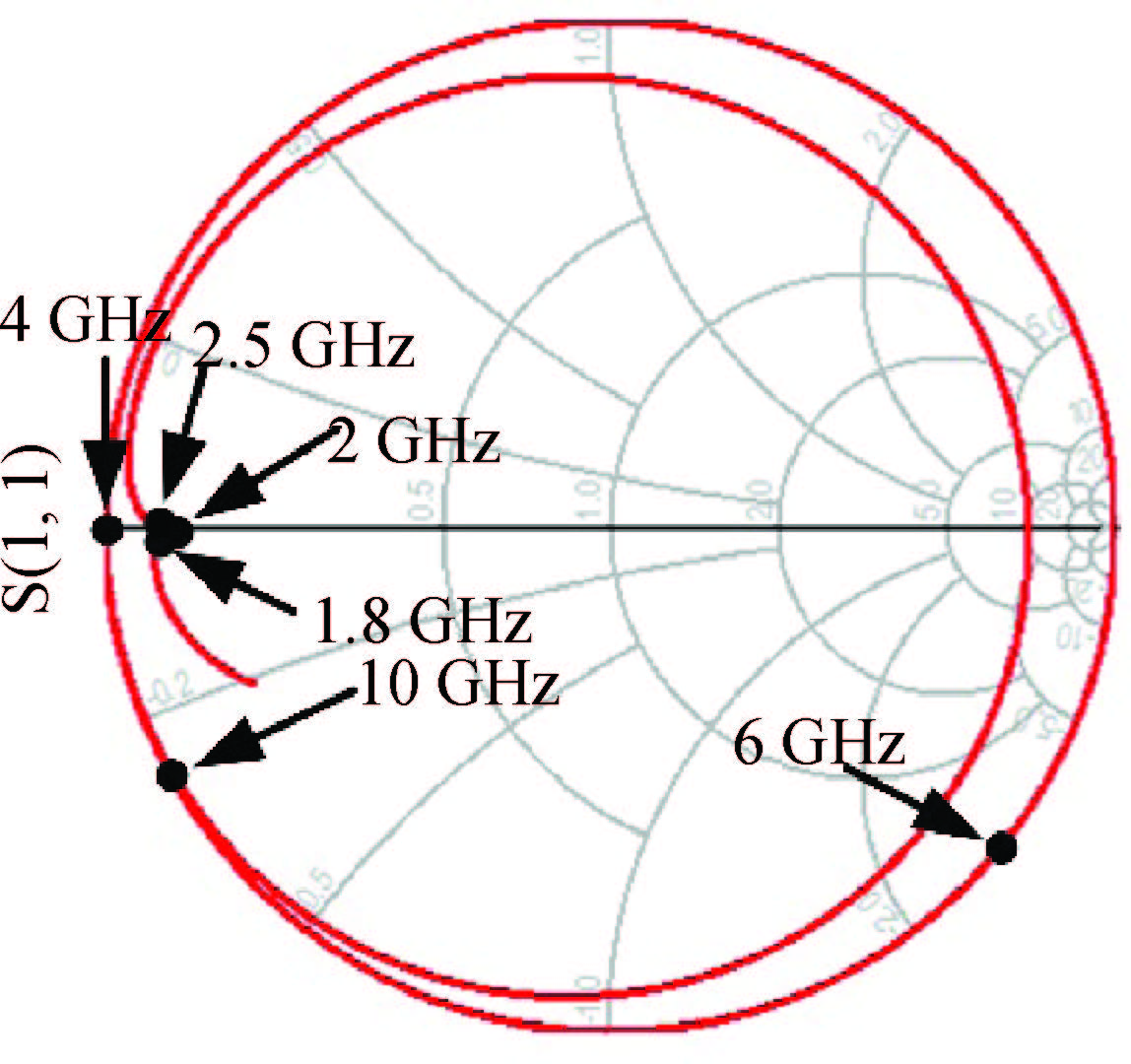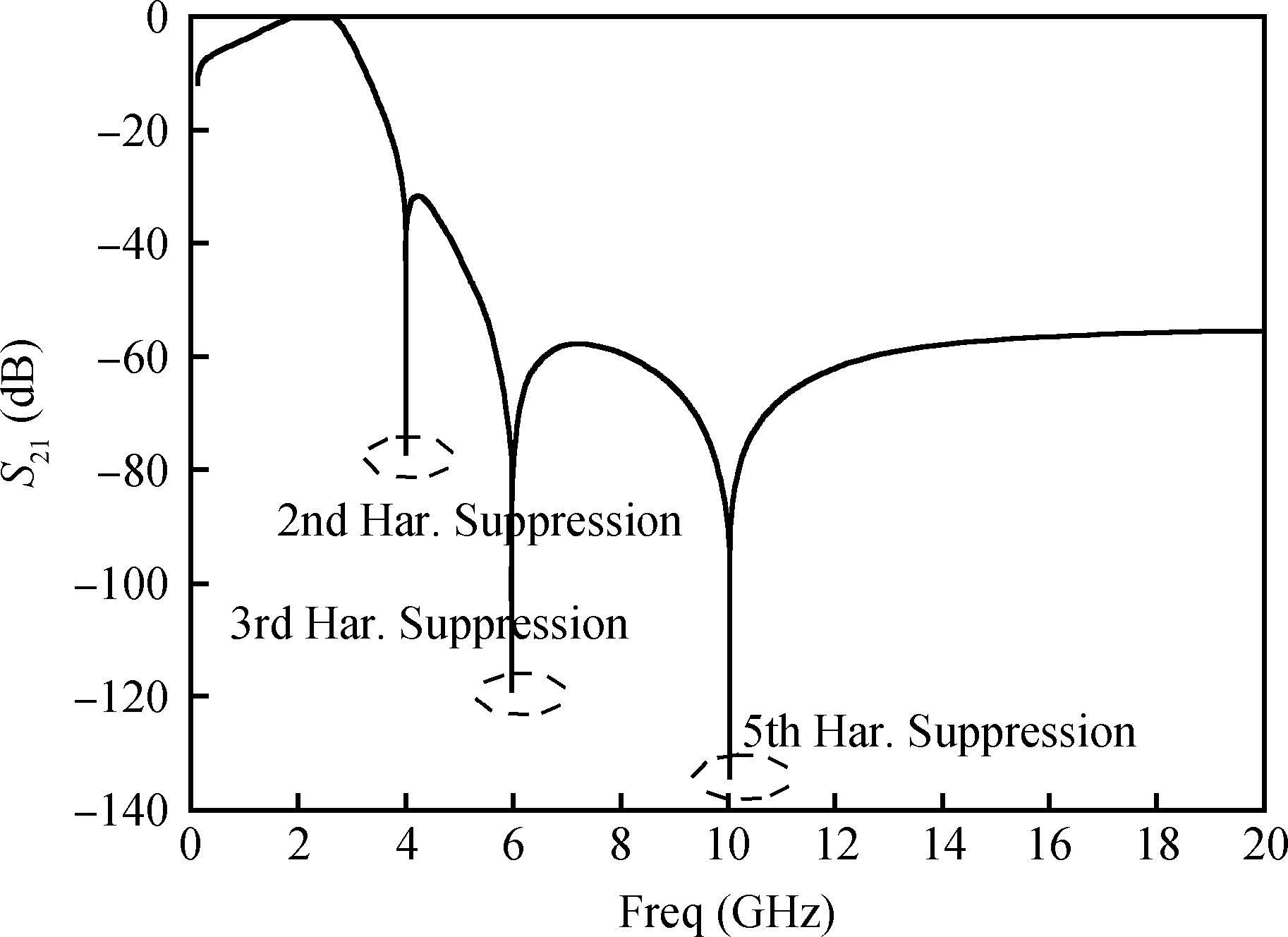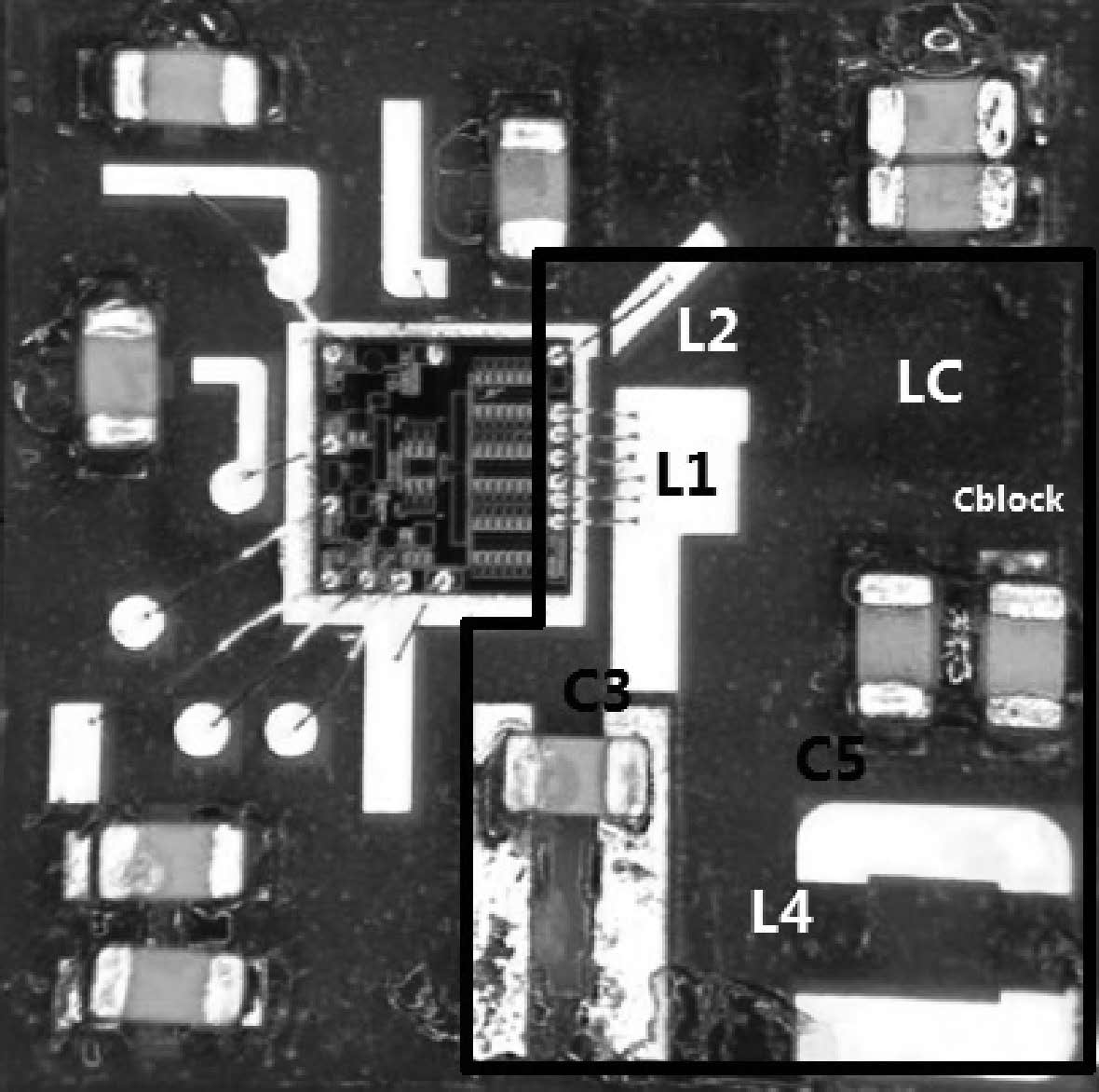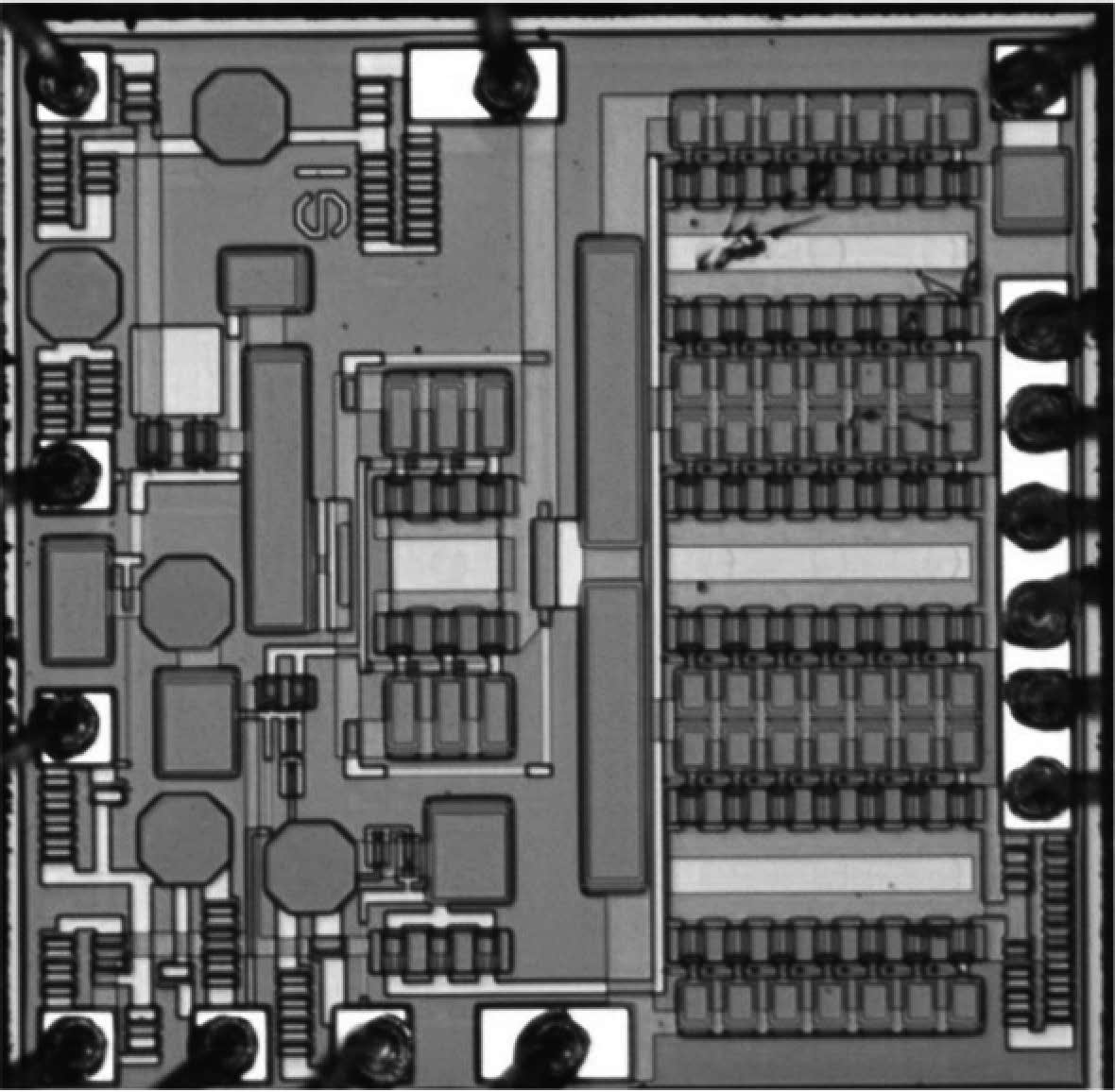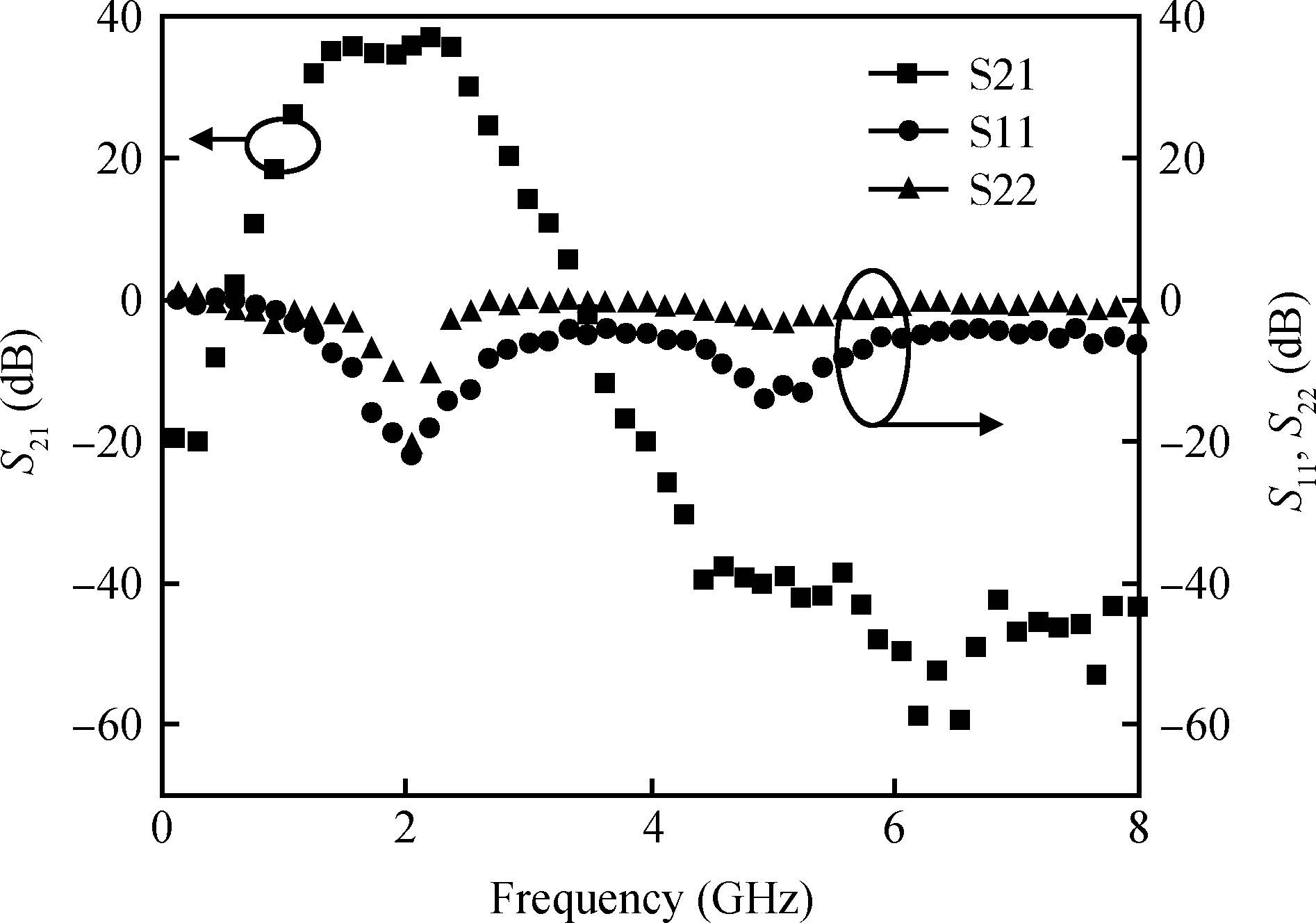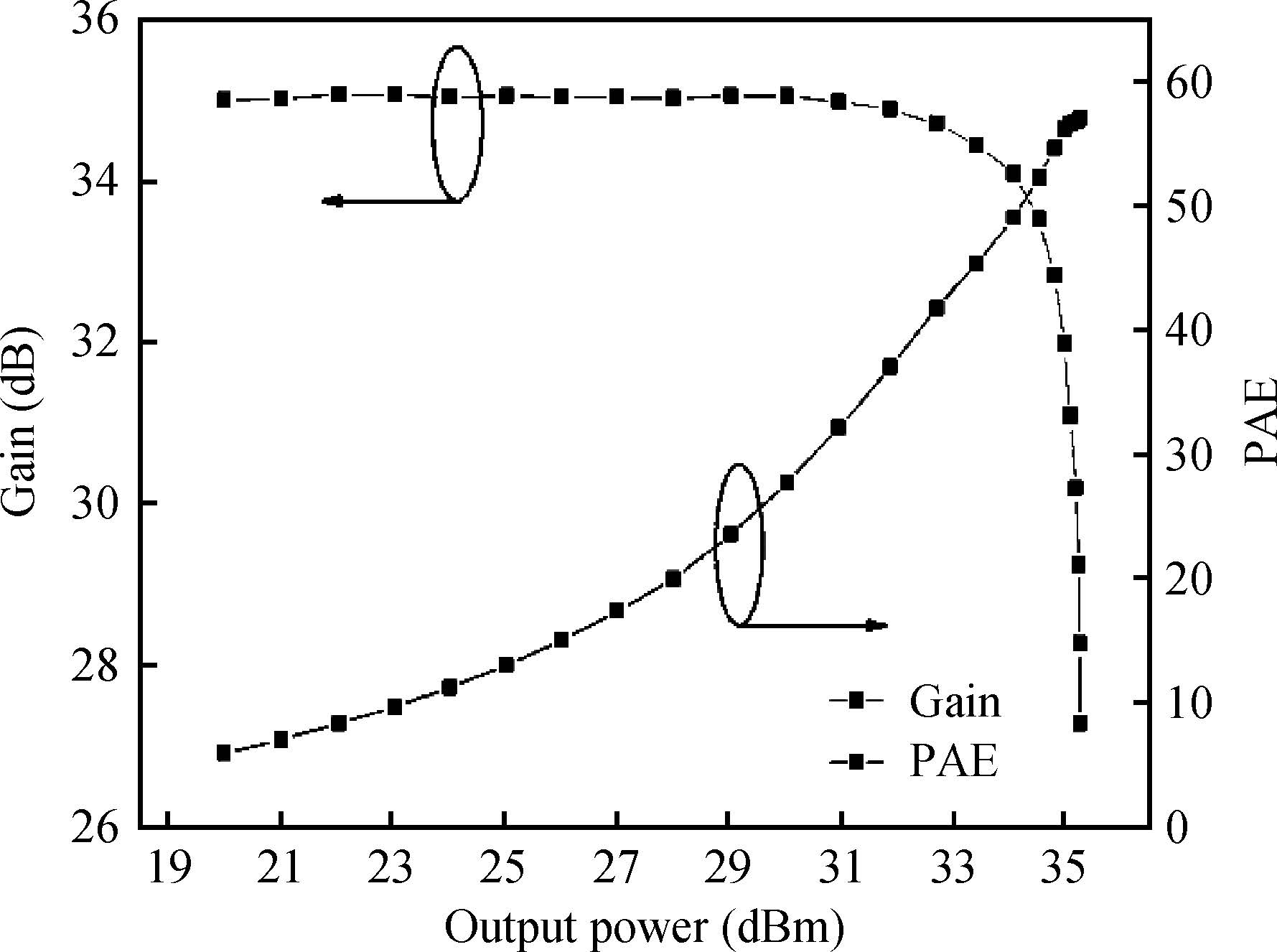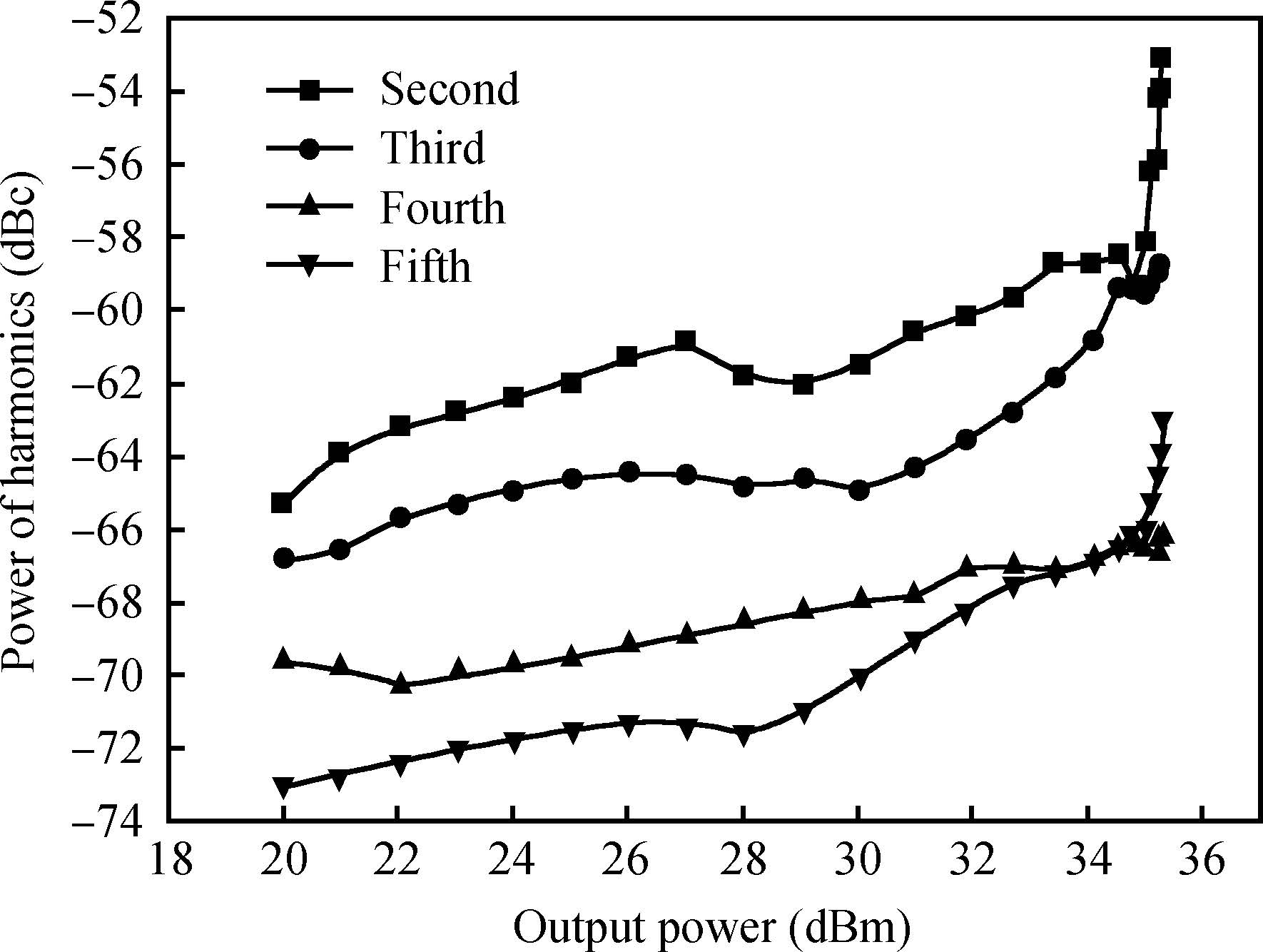| Citation: |
Junming Lin, Guohao Zhang, Yaohua Zheng, Sizhen Li, Zhihao Zhang, Sidi Chen. Design of broadband class-F power amplifier with high-order harmonic suppression for S-band application[J]. Journal of Semiconductors, 2015, 36(12): 125002. doi: 10.1088/1674-4926/36/12/125002
****
J M Lin, G H Zhang, Y H Zheng, S Z Li, Z H Zhang, S D Chen. Design of broadband class-F power amplifier with high-order harmonic suppression for S-band application[J]. J. Semicond., 2015, 36(12): 125002. doi: 10.1088/1674-4926/36/12/125002.
|
Design of broadband class-F power amplifier with high-order harmonic suppression for S-band application
DOI: 10.1088/1674-4926/36/12/125002
More Information
-
Abstract
A broadband class-F power amplifier for an S-band handset device is integrated on a 3×3×0.82 mm3 die using an InGaP/GaAs HBT process. With LC serial harmonic traps immersed into the broadband output matching circuit, good harmonic suppression performance can be achieved. A pure resistive impedance of the matching circuit, but near zero at second and infinite at third harmonic frequency, which enhances the efficiency, is obtained across 1.8-2.5 GHz. Tested with a continuous wave(CW) signal, the PA delivers an output power of 34 dBm and achieves a PAE of 57% at 2 GHz. In addition, excellent harmonic suppression levels of less than-53 dBc across the second to fifth harmonic are obtained.-
Keywords:
- S-band,
- power amplifier,
- broadband,
- class-F,
- harmonic suppression,
- InGaP/GaAs HBT
-
References
[1] [2] [3] [4] [5] [6] [7] [8] [9] [10] [11] [12] [13] [14] -
Proportional views





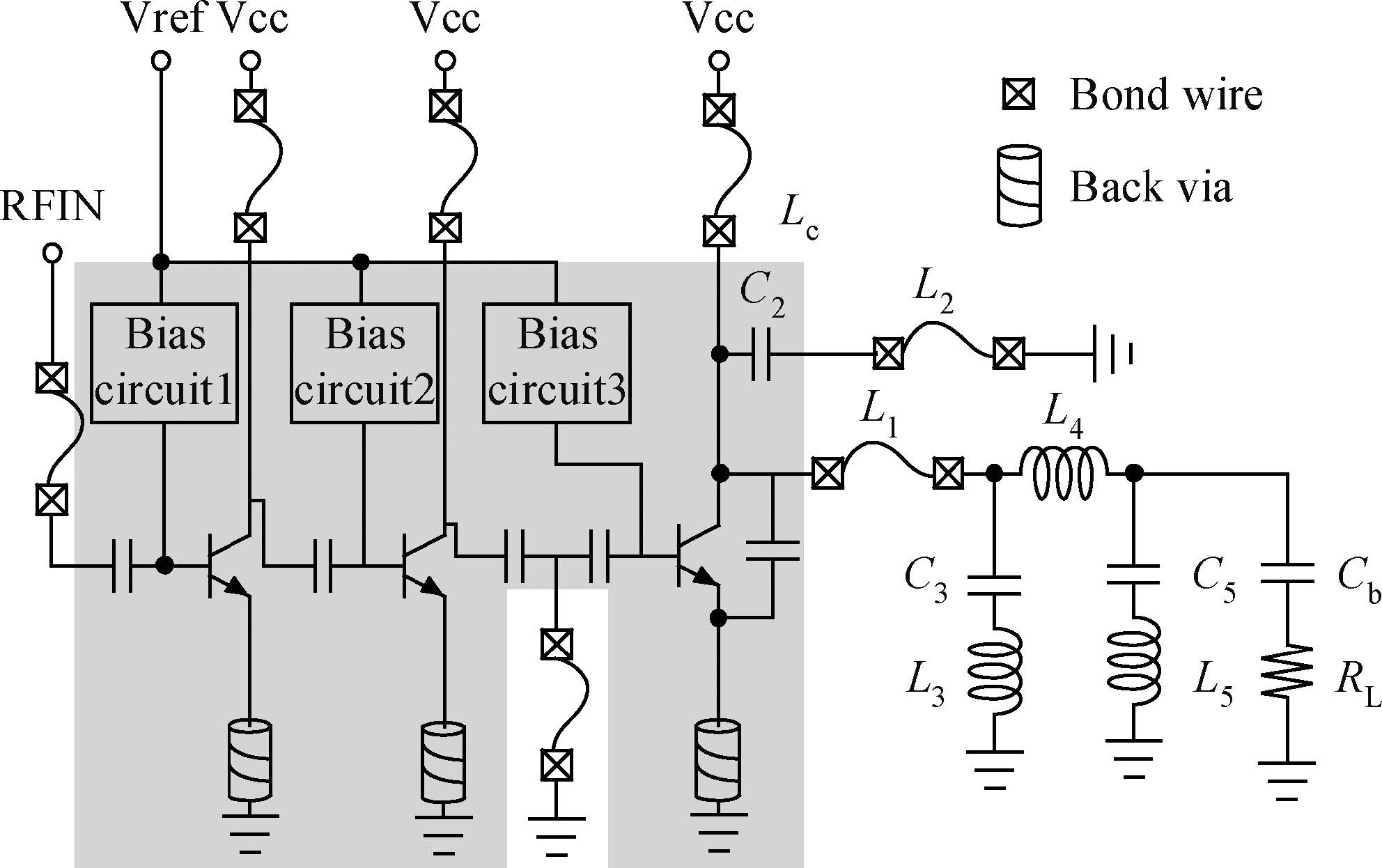
 DownLoad:
DownLoad:
